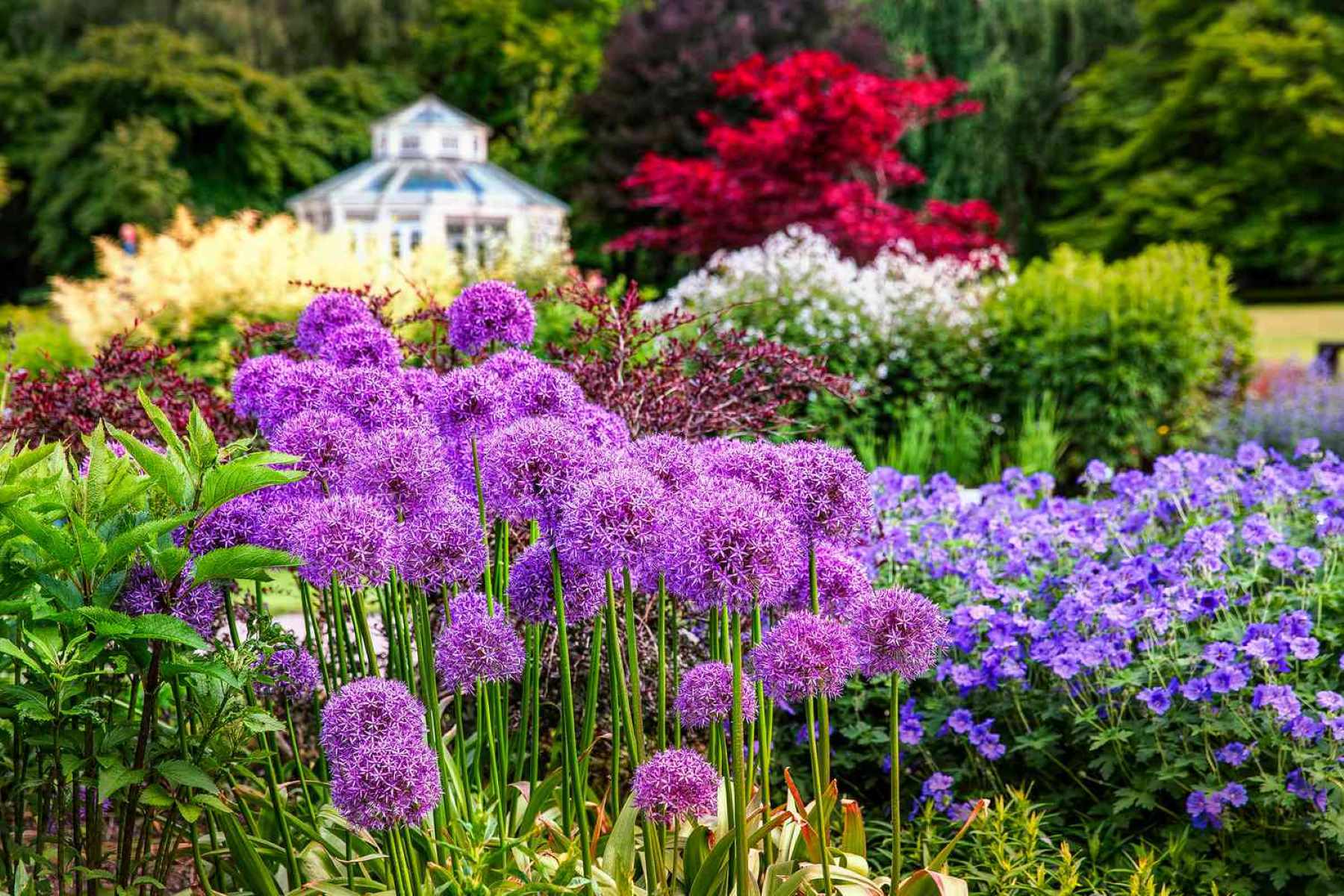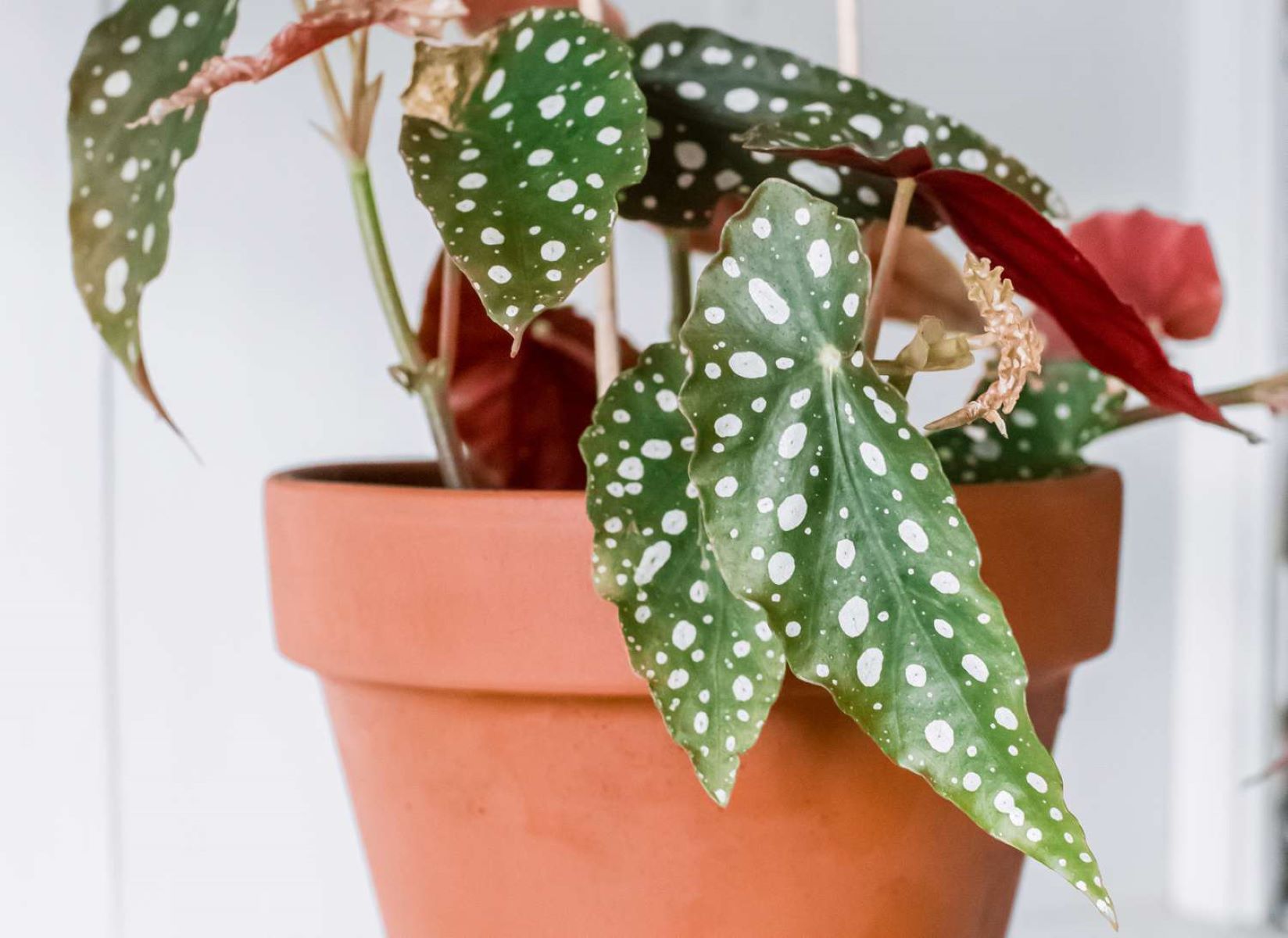Home>Home and Garden>Deer-Proof Flowers: Discover The Ultimate Solution To Keep Your Garden Beautiful And Unharmed!


Home and Garden
Deer-Proof Flowers: Discover The Ultimate Solution To Keep Your Garden Beautiful And Unharmed!
Published: January 9, 2024
Protect your home and garden with deer-proof flowers. Discover the ultimate solution to keep your garden beautiful and unharmed! Create a stunning, deer-resistant landscape.
(Many of the links in this article redirect to a specific reviewed product. Your purchase of these products through affiliate links helps to generate commission for Regretless.com, at no extra cost. Learn more)
Table of Contents
Introduction
Creating a picturesque garden is a labor of love, requiring dedication, creativity, and a green thumb. However, the presence of deer can pose a significant challenge to maintaining the beauty of your outdoor sanctuary. These graceful creatures, while enchanting to observe, can wreak havoc on your carefully nurtured flowers and plants. As a result, many gardeners find themselves in a constant battle to protect their beloved blooms from the appetites of these gentle yet destructive animals.
In this comprehensive guide, we will delve into the world of deer-proof flowers and explore effective strategies to safeguard your garden while preserving its aesthetic appeal. By understanding the behavior of deer, selecting the right flowers, and implementing practical deer-proofing techniques, you can enjoy a flourishing garden that remains unscathed by these majestic creatures.
Gardening enthusiasts and nature lovers alike will find valuable insights and actionable tips to create a harmonious coexistence between their gardens and the local deer population. So, let's embark on this journey to discover the ultimate solution to keep your garden beautiful and unharmed!
Understanding Deer Behavior
Deer, known for their gentle demeanor and graceful presence, are a common sight in many natural landscapes. Understanding their behavior is crucial in devising effective strategies to protect your garden from their browsing habits. These magnificent creatures are primarily herbivores, with a diverse diet that includes leaves, twigs, fruits, and flowers. During the spring and summer months, when food sources are abundant, deer tend to graze on a variety of plants, including ornamental flowers commonly found in gardens.
It's essential to recognize that deer are creatures of habit, often following established trails and visiting familiar feeding grounds. This behavior can lead them to repeatedly target specific areas of your garden, causing significant damage to vulnerable plants. Additionally, deer are known to be more active during the early morning and late evening, making these times particularly susceptible to their foraging activities.
Moreover, deer possess keen senses, especially their sense of smell. They use this heightened olfactory ability to detect the presence of food and potential threats. Understanding the role of scent in deer behavior is pivotal in implementing effective deer-proofing measures. By recognizing the patterns and preferences of these majestic animals, you can proactively safeguard your garden against their browsing tendencies.
In essence, comprehending deer behavior involves acknowledging their dietary preferences, activity patterns, and sensory capabilities. Armed with this knowledge, you can strategically select deer-resistant flowers and implement targeted deterrents to mitigate the impact of deer browsing on your garden. This understanding serves as the foundation for creating a harmonious environment where both your cherished blooms and the local deer population can thrive without conflict.
Choosing Deer-Resistant Flowers
Selecting deer-resistant flowers is a pivotal step in fortifying your garden against the browsing tendencies of these graceful yet voracious creatures. While no plant can be considered completely deer-proof, certain flowers possess natural characteristics that make them less appealing to deer. By incorporating these resilient blooms into your garden, you can mitigate the risk of extensive damage and maintain the visual allure of your outdoor sanctuary.
Characteristics of Deer-Resistant Flowers
Deer-resistant flowers typically exhibit traits that deter deer from consuming them. These characteristics include strong fragrances, bitter tastes, and tough textures. Additionally, flowers with fuzzy or leathery leaves, as well as those with prickly stems, are less palatable to deer. By incorporating these resilient blooms into your garden, you can create an environment that is less inviting to browsing deer.
Recommended Deer-Resistant Flowers
-
Lavender (Lavandula): Known for its fragrant and aromatic blooms, lavender is a popular choice for deer-resistant gardens. The strong scent of lavender is off-putting to deer, making it a resilient and visually appealing addition to your flower beds.
-
Foxglove (Digitalis purpurea): With its tall, showy spikes of tubular flowers, foxglove adds a touch of elegance to any garden. This biennial plant contains toxins that deter deer from consuming it, making it a reliable choice for deer-resistant landscaping.
-
Yarrow (Achillea millefolium): Yarrow, with its feathery foliage and clusters of tiny, tightly-packed flowers, is a hardy and deer-resistant perennial. Its strong scent and bitter taste make it an unappealing choice for deer browsing.
-
Black-Eyed Susan (Rudbeckia hirta): This cheerful and vibrant flower is known for its resilience and ability to thrive in various conditions. Its coarse texture and bitter-tasting foliage make it less attractive to deer, allowing it to flourish in deer-prone areas.
-
Siberian Iris (Iris sibirica): The striking blooms of Siberian iris, coupled with its tough and leathery foliage, make it a valuable addition to deer-resistant gardens. Its unpalatable characteristics serve as a natural deterrent against deer browsing.
Strategic Planting Techniques
Incorporating a diverse array of deer-resistant flowers throughout your garden can enhance its overall resilience. By strategically interplanting these resilient blooms with more vulnerable flowers, you can create a layered defense that reduces the likelihood of extensive deer damage. Additionally, creating barriers such as hedges or utilizing deer-repelling plants as natural borders can further fortify your garden against deer intrusion.
By carefully selecting and strategically planting deer-resistant flowers, you can establish a vibrant and resilient garden that withstands the browsing habits of deer. This proactive approach not only safeguards your blooms but also contributes to the creation of a harmonious outdoor space where nature's beauty can flourish undisturbed.
Implementing Deer-Proofing Techniques
Implementing effective deer-proofing techniques is essential to safeguard your garden from the persistent browsing habits of deer. By integrating practical deterrents and protective measures, you can create a fortified environment that discourages deer intrusion while preserving the beauty of your cherished blooms.
Physical Barriers
Installing physical barriers is a proactive approach to deter deer from accessing your garden. Fencing, particularly those constructed with sturdy materials such as metal or high-tensile wire, serves as a reliable deterrent against deer. Opt for fencing with a height of at least 8 feet to prevent deer from leaping over. Additionally, consider burying the lower portion of the fence to discourage deer from attempting to dig underneath it. When properly installed, fencing effectively restricts deer access and provides a robust defense for your garden.
Deer-Repellent Sprays
Utilizing deer-repellent sprays is a practical and versatile method to protect your plants from deer browsing. These sprays, often formulated with natural ingredients such as putrescent egg solids or garlic, emit odors that are offensive to deer, deterring them from feeding on your garden foliage. Regularly applying deer-repellent sprays to vulnerable plants, especially during the growing season, can effectively discourage deer and minimize the risk of damage to your garden.
Scent-Based Deterrents
Harnessing the power of scent-based deterrents can effectively dissuade deer from approaching your garden. Scented repellents, such as bars of fragrant soap or cotton balls soaked in essential oils like peppermint or lavender, emit strong odors that disrupt deer feeding patterns. Strategically placing these scent-based deterrents around your garden perimeter and near susceptible plants creates an olfactory barrier that discourages deer from venturing further into your garden.
Motion-Activated Devices
Incorporating motion-activated devices, such as sprinklers or ultrasonic repellents, can startle and deter deer from entering your garden. Motion-activated sprinklers release a sudden burst of water when triggered by deer movement, startling them and prompting them to avoid the area. Ultrasonic repellents emit high-frequency sound waves that are unpleasant to deer, effectively deterring them without causing harm. By deploying these innovative devices, you can actively discourage deer from foraging in your garden.
Strategic Plant Selection
Strategic plant selection plays a pivotal role in deer-proofing your garden. By incorporating a diverse array of deer-resistant plants and flowers, you can naturally reduce the appeal of your garden to browsing deer. Additionally, selecting plants with strong fragrances, bitter tastes, or tough textures further fortifies your garden against deer intrusion. By strategically curating your garden with deer-resistant flora, you can create a natural defense that minimizes the risk of deer damage.
By implementing these practical deer-proofing techniques, you can fortify your garden against deer browsing while nurturing a vibrant and flourishing outdoor sanctuary. These proactive measures not only protect your beloved blooms but also contribute to the creation of a harmonious coexistence between your garden and the local deer population.
Maintaining a Beautiful and Deer-Proof Garden
Ensuring the long-term success of a deer-proof garden involves ongoing maintenance and vigilance. By incorporating consistent care and proactive strategies, you can preserve the beauty of your outdoor oasis while effectively deterring deer from causing damage.
Regular Inspections: Conducting routine inspections of your garden allows you to promptly identify any signs of deer intrusion or potential vulnerabilities. Keep a keen eye out for evidence of deer browsing, such as partially eaten foliage or trampled plants. By promptly addressing any signs of deer activity, you can take proactive measures to reinforce your deer-proofing defenses and minimize the impact of their presence.
Pruning and Grooming: Regular pruning and grooming of your garden not only contribute to its aesthetic appeal but also play a role in deer deterrence. Trimming back overgrown foliage and maintaining tidy garden beds reduces the likelihood of providing hiding spots or shelter for deer. Additionally, removing fallen leaves and debris eliminates potential attractants for deer, contributing to a less inviting environment for browsing.
Seasonal Adjustments: Adapting your deer-proofing strategies to coincide with seasonal changes is essential for maintaining an effective defense against deer. During the winter months, when natural food sources are scarce, deer may be more inclined to seek out garden plants. Implementing additional protective measures, such as reinforcing physical barriers or applying extra deer-repellent sprays, can help safeguard your garden during this vulnerable time.
Consistent Application of Deterrents: Regularly applying deer-repellent sprays and refreshing scent-based deterrents is crucial for sustaining their effectiveness. As weather conditions and plant growth evolve, maintaining a consistent regimen of deer-proofing measures ensures that your garden remains fortified against deer browsing. By adhering to a proactive schedule of deterrent application, you can effectively minimize the risk of deer damage to your cherished blooms.
Community Awareness: Engaging with your local community and sharing insights on deer-proofing techniques can foster a collective effort to mitigate deer-related challenges. By exchanging knowledge and experiences with fellow gardeners, you can contribute to a broader understanding of effective deer-proofing strategies. Additionally, collaborating with local wildlife conservation organizations can provide valuable resources and guidance for managing deer interactions in residential areas.
By integrating these proactive maintenance practices into your gardening routine, you can uphold the allure of your outdoor haven while effectively deterring deer from encroaching on your cherished blooms. Embracing a holistic approach to maintaining a beautiful and deer-proof garden not only safeguards your plants but also fosters a deeper appreciation for the delicate balance between nature and human cultivation.













